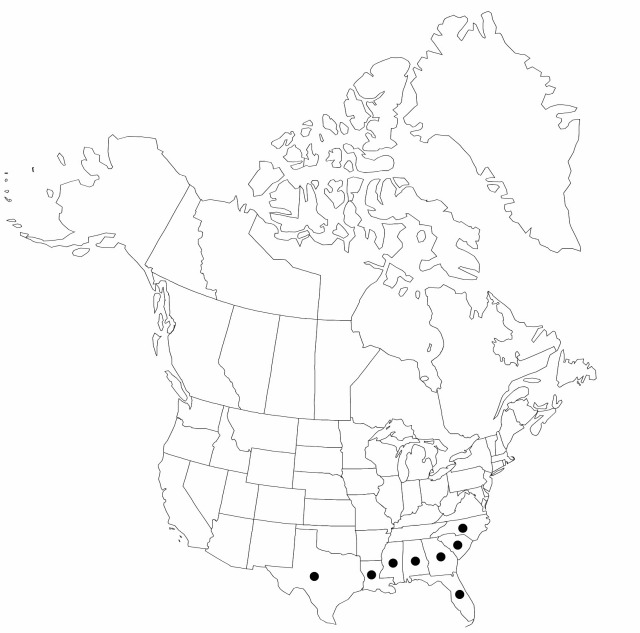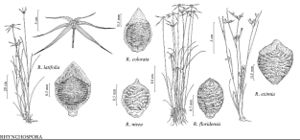Rhynchospora latifolia
Mem. New York Bot. Gard. 37: 86. 1984.
Plants perennial, cespitose or solitary, to 100 cm; rhizomes scaly, 3–4 mm thick. Culms arching or erect, leafybased, distally wandlike, terete, multiribbed. Leaves ascending to spreading, overtopped by scape; blades linear, proximally flat, 2.5–5 mm wide, apex subulate, trigonous. Inflorescences terminal, headlike clusters of spikelets, clusters dense, leafyinvolucrate; involucral-bracts several, spreading to downcurved, longest 6–13 cm × 5–10 mm, mostly white to midbract, then green, abruptly narrowly linear. Spikelets white, ovoid, 5–7 mm; fertile scales boatshaped, sharply curvedkeeled, 5 mm, apex acute. Flowers: perianth absent. Fruits several per spikelet, 1.5–2 mm; body yellowish to deep brown, tumidly lenticular, broadly obovoid to orbicular or oblate, 1.5 mm, widest at or toward midbody, margins flowing to tubercle; surfaces with many fine rows of vertical shallow lattices, their contiguous ends making transverse rows of papillae; tubercle crescent-based, depressedtriangular, 0.5 mm, apex acute. 2n = 12.
Phenology: Fruiting late spring–summer.
Habitat: Sands and peats of bogs in pine savannas and flatwoods
Elevation: 0–200 m
Distribution

Ala., Fla., Ga., La., Miss., N.C., S.C., Tex.
Discussion
A specimen collected near Tullahoma, Tennessee, reported as Dichromena latifolia (A. Gattinger 1901), was later destroyed by fire. I did not see the specimen, nor was a description of it published. Because extant populations of the similar Rhynchospora colorata are just over the border in Alabama, that species is likely to have been the one found by Gattinger.
Selected References
None.
Lower Taxa
"shortened" is not a number."widest" is not a number."wider" is not a number."fine" is not a number.
